Formula, Solved Example Problems | Statistics - Partition Measures | 11th Statistics : Chapter 5 : Measures of Central Tendency
Chapter: 11th Statistics : Chapter 5 : Measures of Central Tendency
Partition Measures
Partition
Measures
Quartiles
There
are three quartiles denoted by Q1, Q2 and Q3 divides the frequency
distribution in to four equal parts

That is 25 percent of data will lie below Q1, 50 percent of data below Q2 and 75 percent below Q3. Here Q2
is called the Median. Quartiles are obtained in almost the same way as median
Quartiles for Raw or Ungrouped data:
If the data set consist of n items and arranged in ascending
order then
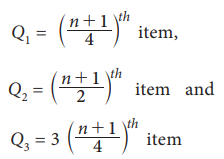
Example 5.30
Compute Q1 and Q3 for the data relating to the marks of 8 students in an examination given below 25, 48, 32, 52, 21, 64, 29, 57
Solution:
n = 8
Arrange the values in ascending
order
21, 25, 29, 32, 48, 52,
57, 64 we have

Quartiles for Discrete Series
(grouped data)
Step 1: Find cumulative
frequencies
Step 2 : Find ((N+1)/ 4)
Step 3 : See in the
cumulative frequencies, the value just greater than ((N+1)/ 4) the
corresponding value of x is Q1
Step 4 : Find 3((N+1)/ 4)
Step 5 : See in the
cumulative frequencies, the value just greater than 3((N+1)/ 4) then the
corresponding value of x is Q3.
Example 5.31
Compute Q1
and Q3 for the data
relating to age in years of 543 members in a village

Solution:
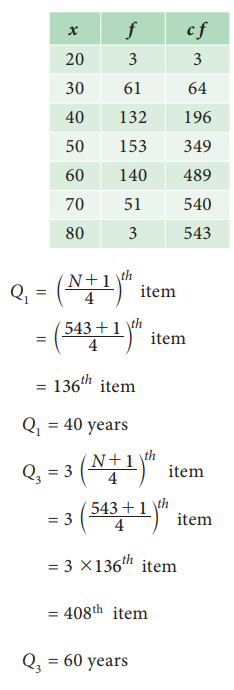
Quartiles for Continuous series (grouped data)
Step 1: Find cumulative
frequencies
Step 2 : Find (N/4)
Step 3 : Q1 class is
the class interval corresponding to the value of the cumulative frequency just
greater than (N/4)
Step 4 : Q3 class is the
class interval corresponding to the value of the cumulative frequency just
greater than 3 (N/4)
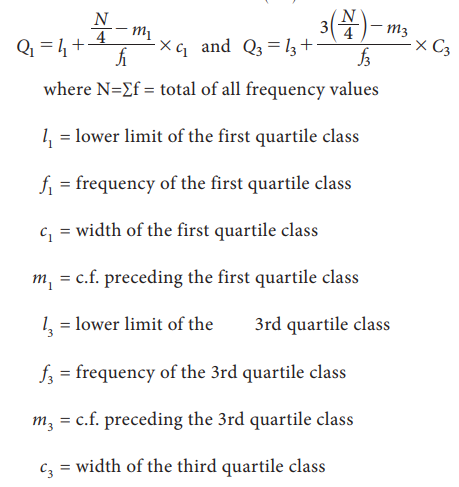
Example 5.32
Calculate the quartiles Q1
and Q3 for wages of the
labours given below

Solution:
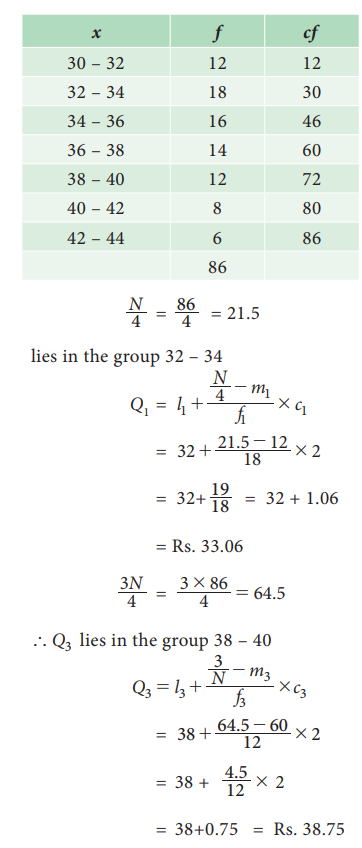
Deciles
Deciles are similar to quartiles. Quartiles divides ungrouped
data into four quarters and Deciles divide data into 10 equal parts .
Example 5.33
Find the D6 for the following data
11, 25, 20, 15, 24, 28, 19, 21
Solution:
Arrange in an ascending order
11,15,19,20,21,24,25,28
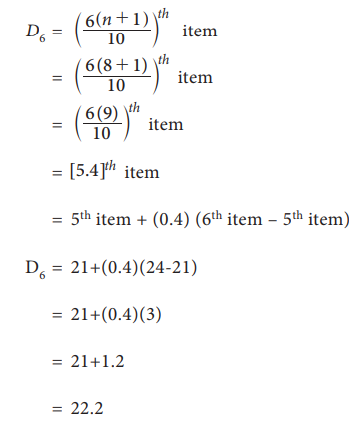
Example 5.34
Calculate D5
for the frequency distribution of monthly income of workers in a factory

Solution:
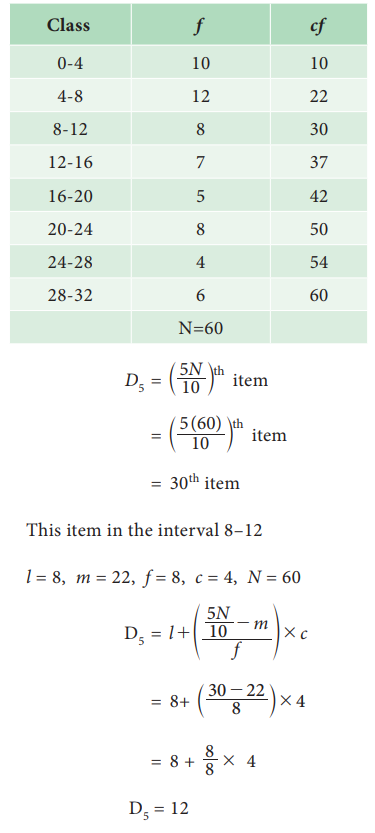
Percentiles
The percentile values divide the frequency distribution into 100
parts each containing 1 percent of the cases. It is clear from the definition
of quartiles, deciles and percentiles
Relationship
P25 = Q1
P50 = Median = Q2
P75 = 3rd quartile = Q3
Example 5.35
The following is the monthly income (in 1000) of 8 persons
working in a factory. Find P30
income value
10,14, 36, 25, 15, 21, 29, 17
Solutions:
Arrange the data in an ascending order.
n = 8
10,14,15,17,21,25,29,36
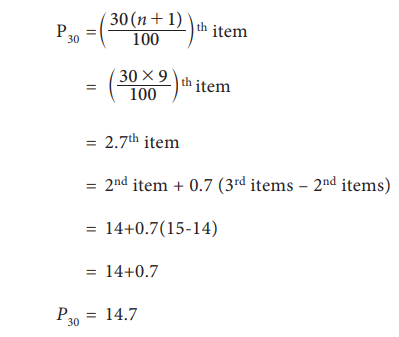
Example 5.36
Calculate P61
for the following data relating to the height of the plants in a garden

Solution:
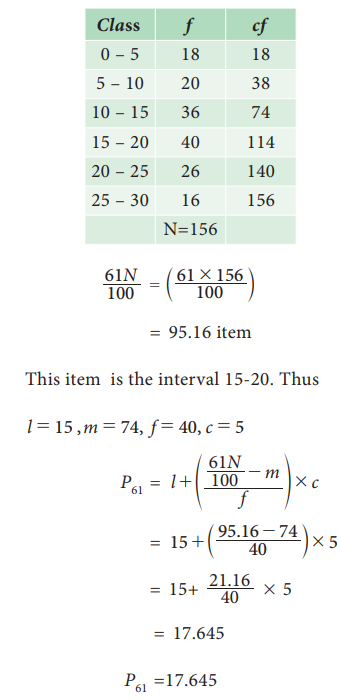
Related Topics